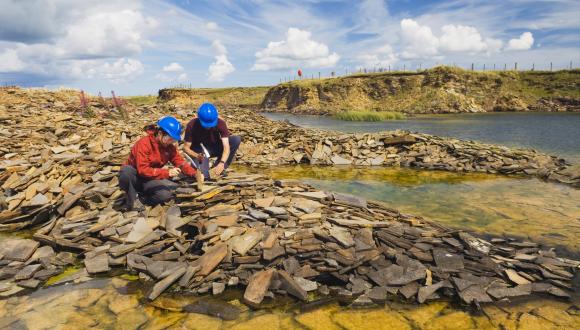Geodiversity in protected areas
A range of international, national and local designations help to safeguard Scotland’s geodiversity.
All of these designations, together with local geodiversity action plans, can help to deliver healthy places for a greener Scotland.
International designations
Find out about Scotland’s geoparks, which are prime geotourism destinations.
National designations
National Parks
Geodiversity is one of the special qualities of Scotland’s National Parks, and both National Parks contain internationally important geodiversity.
Around 9.5% of the total area covered by our National Parks has Geological Conservation Review (GCR) site status.
This breaks down as:
- 12.8% of Cairngorms National Park has GCR site status
- 1.5% of Loch Lomond and The Trossachs National Park has GCR site status
Some of these GCR sites are protected by Site of Special Scientific Interest legislation. The rest are protected by GCR site protection policies that exist in the National Parks’ local plans.
National Parks also benefit locally important geodiversity sites. For example, 89 Local Geodiversity Sites are proposed within the Cairngorms National Park.
Learn more about our National Parks.
National Nature Reserves
Many of our National Nature Reserves (NNRs) contain significant geological and geomorphological interest.
Around 37% of the total NNR area in Scotland has GCR site status. This geodiversity benefits from the sympathetic management and promotion of NNRs.
Read more about our National Nature Reserves.
Sites of Special Scientific Interest
Site of Special Scientific Interest (SSSI) status is the main statutory means for protecting Scotland’s geodiversity. The Geological Conservation Review (GCR) underpins the designation of Scotland’s geological SSSIs.
Scotland’s SSSIs contain over 660 notified Earth science features. This figure is an increase from 612 in 2005, mostly due to the review of notified features in SSSIs following the Nature Conservation (Scotland) Act 2004.
Find out more about our Sites of Special Scientific Interest.
Read our Guidance on collecting geological samples from Sites of Special Scientific Interest in Scotland.
Marine Protected Areas
Nature Conservation Marine Protected Areas can be used to protect geological or geomorphological features in Scottish territorial waters.
A survey, similar to that carried out for terrestrial GCR sites, identified 32 key geodiversity areas within Scottish territorial waters and offshore waters adjacent to Scotland.
Learn more about Scotland’s Marine Protected Areas offer protection to a wide range of geological and geomorphological features.
Local designations
Local Nature Conservation Sites include Local Geodiversity Sites (LGS), which are also known as Regionally Important Geological Sites (RIGS).
These sites:
- provide examples of geology and geomorphology of regional and local importance
- can add to the quality of local environments
- offer opportunities for recreation and informal education
Read about Geological Conservation Review sites
Read about other Local Nature Conservation Sites.
Find out more
Find out more about Scotland’s geodiversity interests and sensitivity assessment through the following NatureScot commissioned reports:
- The selection of Nature Conservation Marine Protected Areas (MPAs) in Scotland - assessment of geodiversity interests. NatureScot Commissioned Report No. 633.
- Assessing the sensitivity of geodiversity features in Scotland’s seas to pressures associated with human activities. NatureScot Commissioned Report No. 590.
- Characterising Scotland's marine environment to define search locations for new Marine Protected Areas. Part 2: The identification of key geodiversity areas in Scottish waters (final report). NatureScot Commissioned Report No. 432.




